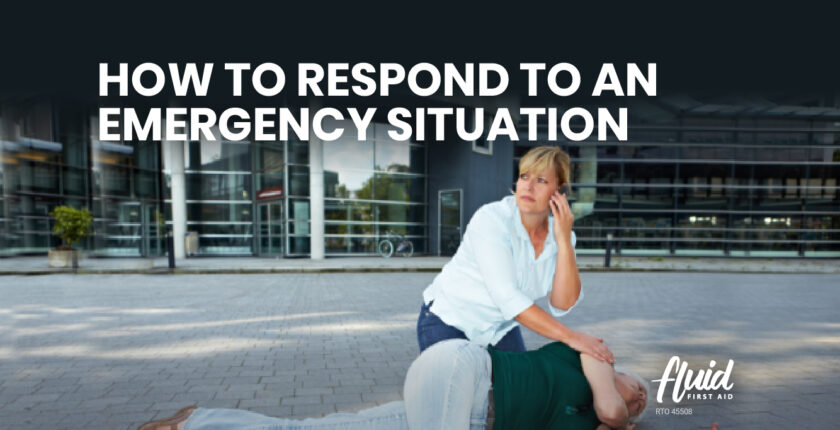The Fluid Learning News+
How to Respond to an Emergency Situation

Accidents can happen any time any where, at the supermarket, in your apartment lobby, when picking up the kids up from school etc. Knowing how to respond to an emergency situation will give you the confidence to act quickly and assertively.
Here are the Golden Rules of First Aid: DRS ABCD so you can keep them in mind and help save a life.
DANGER: survey the scene and check for any danger ( fire, broken power lines, bodily fluids etc). Do not put yourself or others in danger and if possible remove the victim from danger.
RESPONSE: assess if the person is responsive with the talk and touch method ask them their name or squeeze their hands.
-
If conscious: make them comfortable and reassure them you’re there to help . Check for any injury and apply first aid, call 000 if needed
-
If unconscious: send for help by calling 000 and ask someone to find a first aid kit and defibrillator.
SEND: Call 000. Be ready to respond to the person answering your call what is your exact location, type of emergency ( a road accident, a fire, a fall, an injured person, etc)
AIRWAY:
-
If the person is conscious and responding , check they are breathing normal and for other injuries and apply first aid where required
-
If the person is unconscious, you will need to check they are breathing normally: open their mouth and check if there is anything in the mouth. If there is, roll the person to the side and clear the mouth and airway by using the finger sweep.
BREATHING: check for normal breathing: look, listen feel for small, regular, quite, continuous breaths
-
Look for chest movements (up and down)
-
Listen by putting your ear near to their mouth and nose.
-
Feel for breathing by putting your hand on the lower part of their chest.
If the person is breathing normally put them on their side and check for other injuries then apply first aid
If the person is not breathing, start CPR straight away
CPR 30:2
Place the person flat on their back.
Put the heel of one hand in the centre of their chest and your other hand on top.
Press down hard and fast (compressing to one third of their chest depth) 30 times. Keep your elbows straight when compressing.
Gently tilt their head back and lift their chin, pinch their nostrils closed, place your mouth firmly over their open mouth and gently blow into their mouth twice, remember to take a breath in between these breaths yourself.
Keep going with the 30 compressions and two breaths at the speed of 2 compression a second or 100 to 120 compressions per minute.
DEFIBRILLATOR: If CPR has started, continue compression while applying a Defibrillator if one is available. If no defibrillator is available it is very important to continue CPR for as long as you are able to or until the paramedics take over.
Tip: find out where defibrillators are located at places that you visit frequently: shopping centre, gym, club, etc.
By following this action plan you can make a difference in a person’s life.
Emergencies emphasise the importance of keeping your first aid skills and knowledge up-to-date. Consider doing a First Aid course so you can recognise an emergency and give first aid until professional help arrives. Visit us to book your course https://fluidfirstaid.viveo.design/
Also, because the majority of accidents happen at home, having a well-stocked first aid kit available will help you be prepared. Visit https://firstaidkitsaustralia.com.au and get your First Aid Kit
Author:Heber
Leave a Reply Cancel reply
You must be logged in to post a comment.
